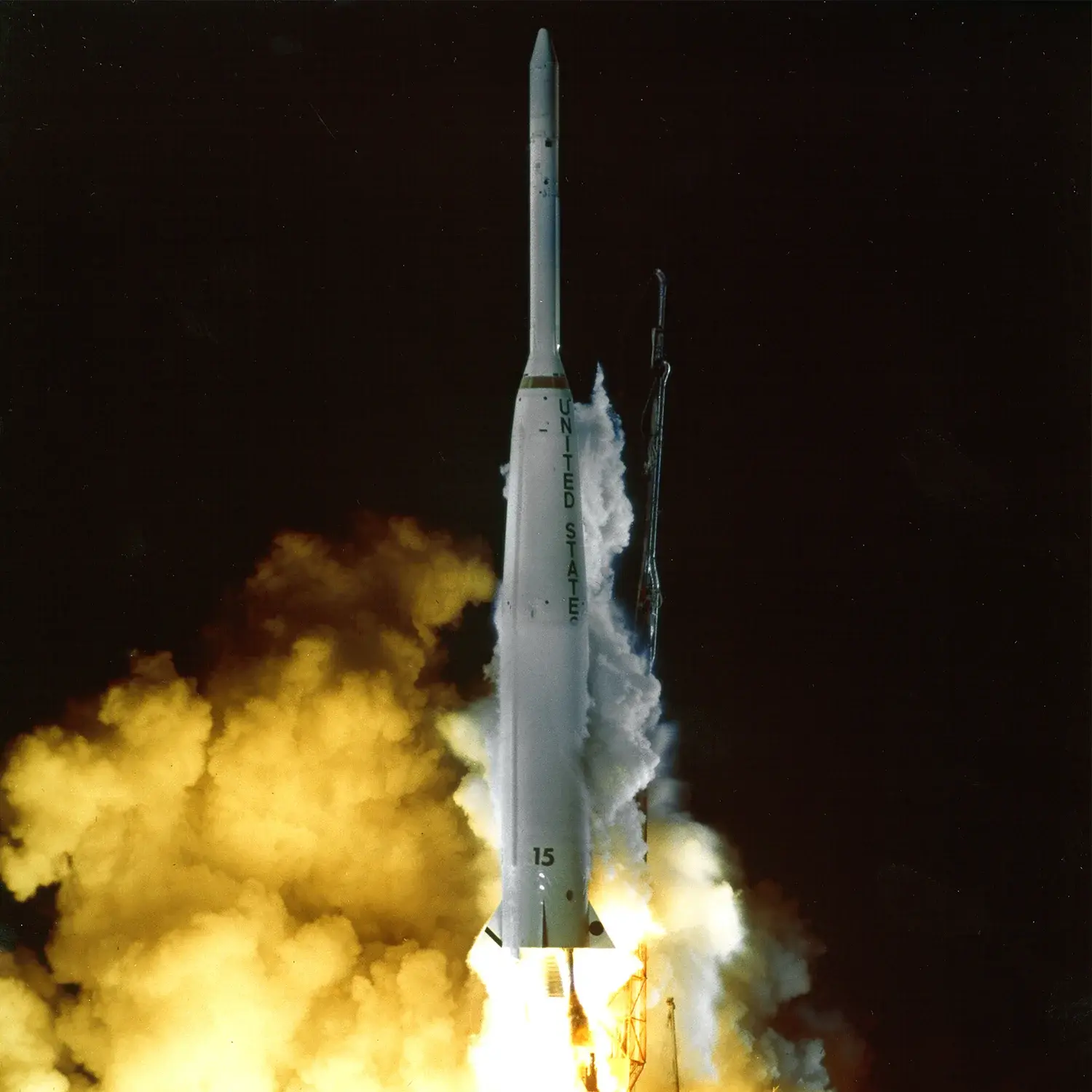TIROS-8
Launch Success
Liftoff Time (GMT)
09:30:00
Saturday December 21, 1963
Watch Replay
24/7 Coverage
Mission Details
TIROS-8
The spacecraft was 1.07m in diameter, 0.56m high and weighed 123kg. The craft was made of aluminum alloy and stainless steel then covered by 9200 solar cells. The solar cells served to charge the nickel-cadmium (nicad) batteries. Three pairs of solid-propellant spin rockets were mounted on the base plate. This craft contained two wide-angle camera systems, one with the standard TIROS wide-angle lens and one with an APT lens designed to photograph an area 1300km on a side (the largest field of view to date). APT pictures were transmitted using a slow-scan principle (four lines per second), a principle similar to the transmission of radio photographs. Each APT ground station was designed to receive three pictures per orbit. Because of the APT flight test objective of this mission, and the fact that TIROS-7 was still operational, no radiometers were flown aboard TIROS-8. TIROS-8's APT system exceeded its 90-day expected lifetime and was a great success. Forty-seven ground stations around the world were able to ingest satellite images, forming the first body of wide-angle imagery ever assembled. True space-based study of the Earth had begun.
Sun-Synchronous Orbit
1 Payload
123 kilograms
Rocket

Launch Site
Stats
Delta B
7th
Mission
6th
Mission of 1963
1963
68th
Orbital launch attempt
